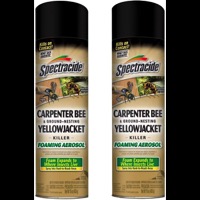Carpenter Bees
Tackling Carpenter Bees
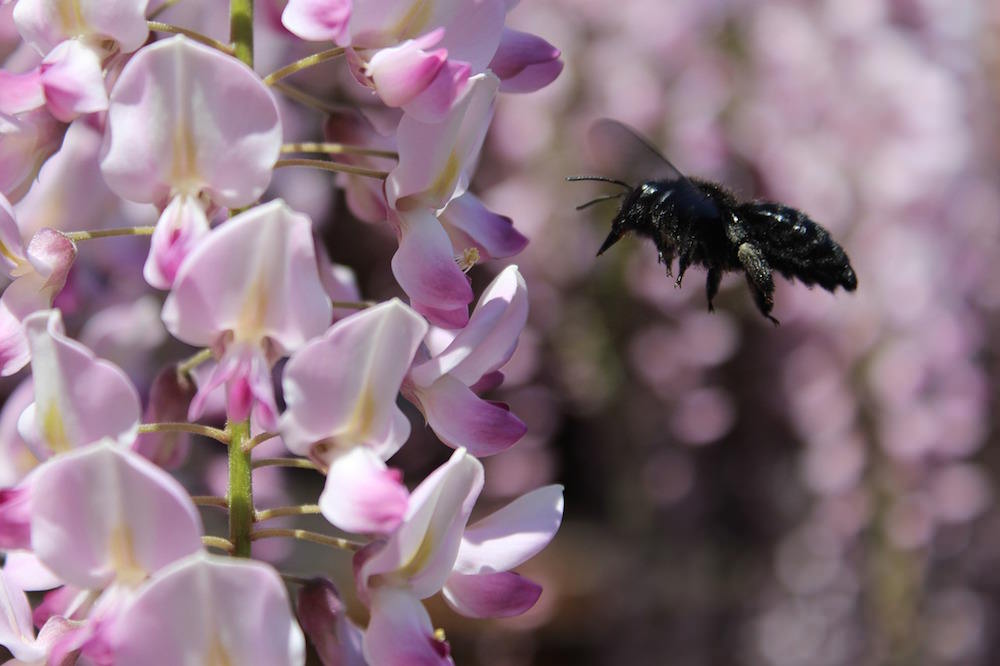
By Jess Simmonds, Expert Reviewer for Repellent Guide
published: Aug 01, 2017 | updated: Aug 01, 2017
The Types of Wood Preferred by Carpenter Bees
If you are a property owner trying to cope with a large population of carpenter bees, then finding effective ways to eradicate the insects is essential. There are approximately 500 varieties of these bees that build nests in several types of dead wood, including inside structures such as fences, decks and homes. Certain species of carpenter bees live in different geographic regions, making it easier to narrow down the species invading your home and outbuildings. This bee species prefers wooden structures made of:
- Redwood
- Oak
- Cyprus
- Fir
- Pine
Untreated wood without bark is much easier for carpenter bees to drill inside of to build nests for laying larvae, and female bees often use old nests created by previous destructive insects.
How to Recognize Carpenter Bees
This bee species resembles bumblebees but is much larger with a shiny black body. The best way to determine if the bees inside a nest are bumblebees or carpenter bees is to look at the insect’s abdomen because a bumblebee has thick hair on its abdomen while carpenter bees do not have hair on this area of the body. Look for stinging insects in these body colors to determine if it is a carpenter bee species:
- Purplish blue
- Greenish black
- Metallic blue
- Black
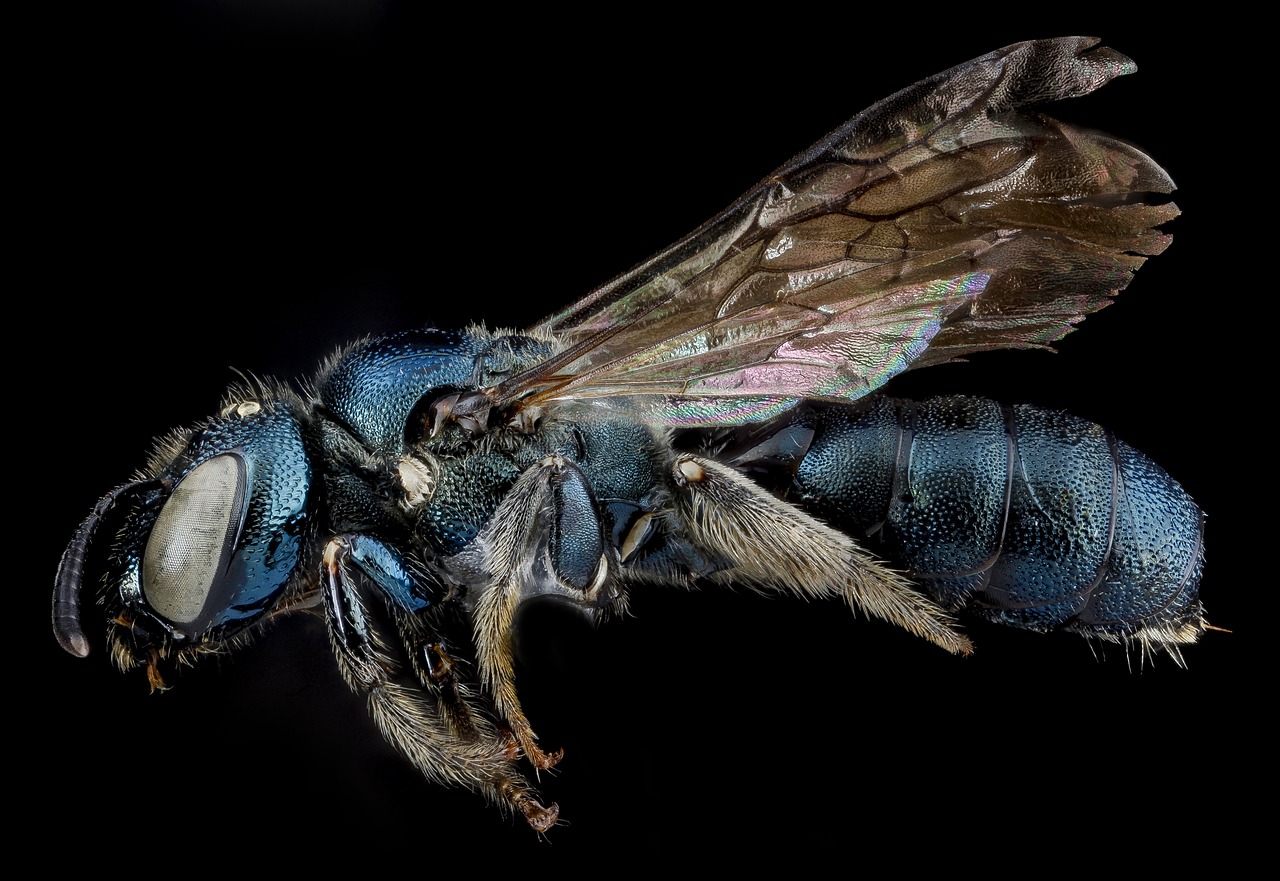
With some species of carpenter bees, you will notice that the males have a yellow or white head with large eyes. There are fewer male than female carpenter bees, and males do not have a stinger. Female carpenter bees are not aggressive unless provoked but do cause a lot of damage to wooden structures when not eradicated from the area. Related carpenter bee females tend to congregate to form social groups to build nests in wood after boring tiny holes. Alternatively, there are solitary carpenter bee species that will drill holes close together while living separately.
How Carpenter Bees Damage Living Trees and Wooden Structures
Both large and small carpenter bee nests lead to structural problems caused by extensive damage to wooden supportive frames and roofing materials. This species of bee can also destroy trees on your property due to the severe damage to the living organism that disrupts the flow of sap and weakens sturdy trunks. While the entrance to a carpenter bee’s nest may look tiny, the insects continue to create numerous tunnels inside a tree trunk that lead to branches falling from a tree or a building’s beams becoming completely degraded. This insect does not consume the wood as it makes holes and tunnels, but the particles are pushed outside instead or used to make cells where new bees will grow.
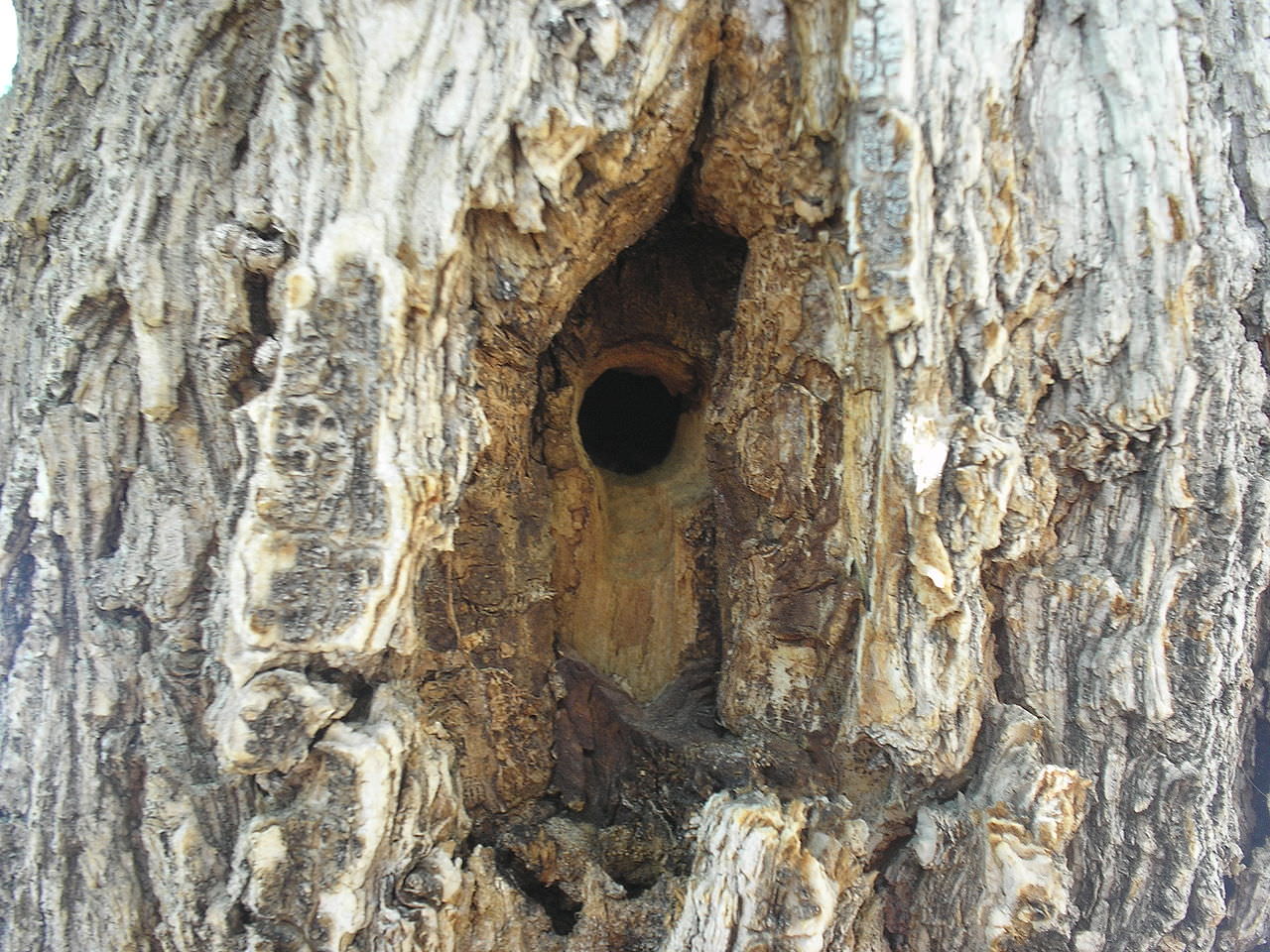
Beneficial Natural Predators of Carpenter Bee Larvae
The primary purposes of the carpenter bee’s nest and tunnels are to store nectar needed to feed the next generation of bee larvae that are kept inside tiny cells. There are beneficial natural carpenter bee predators that you want on your property. Woodpeckers are able to hear the tiny bee larvae moving inside cells in the nests and will peck into a tree to consume the larvae, leading to a massive reduction in adult carpenter bees. Unfortunately, woodpeckers also cause damage to structures and trees during this process in addition to make a lot of noise while pecking on wood.
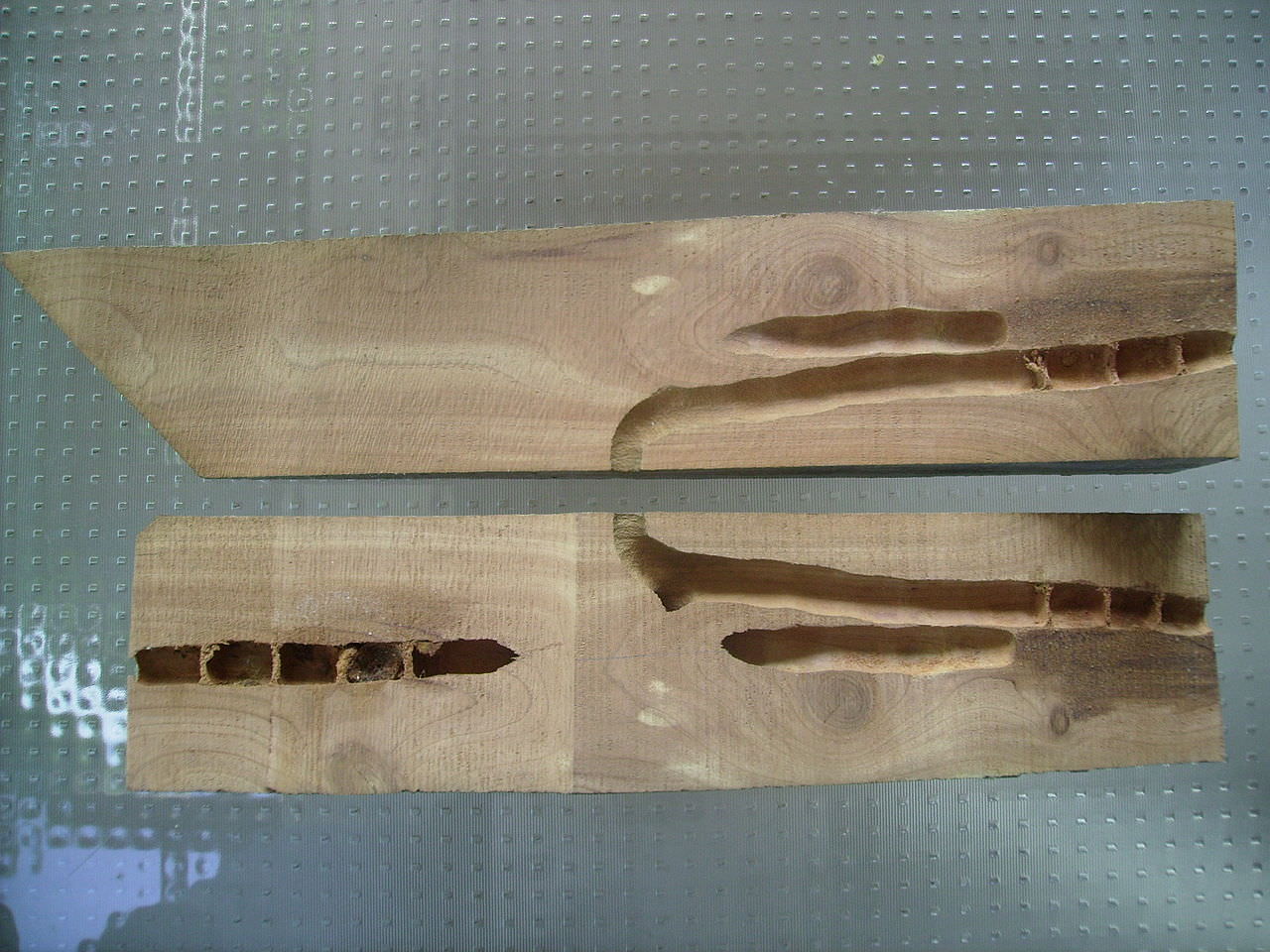
Image Licensed under CC BY-SA 3.0
Eradicating Carpenter Bees is a Multi-Step Process
There are also two species of flies that lay eggs near the entrances of carpenter bee’s nests. As the fly’s larvae hatch, the fly maggots eat the carpenter bee larvae. Depending on the location of the carpenter’s bees’ nests, homeowners may not want numerous flies and maggots on structures or trees. To avoid structural damage from carpenter bees, flies or woodpeckers, you must find more effective ways to eradicate the insects. It is important to realize that getting rid of carpenter bees takes time because the best methods require several steps.
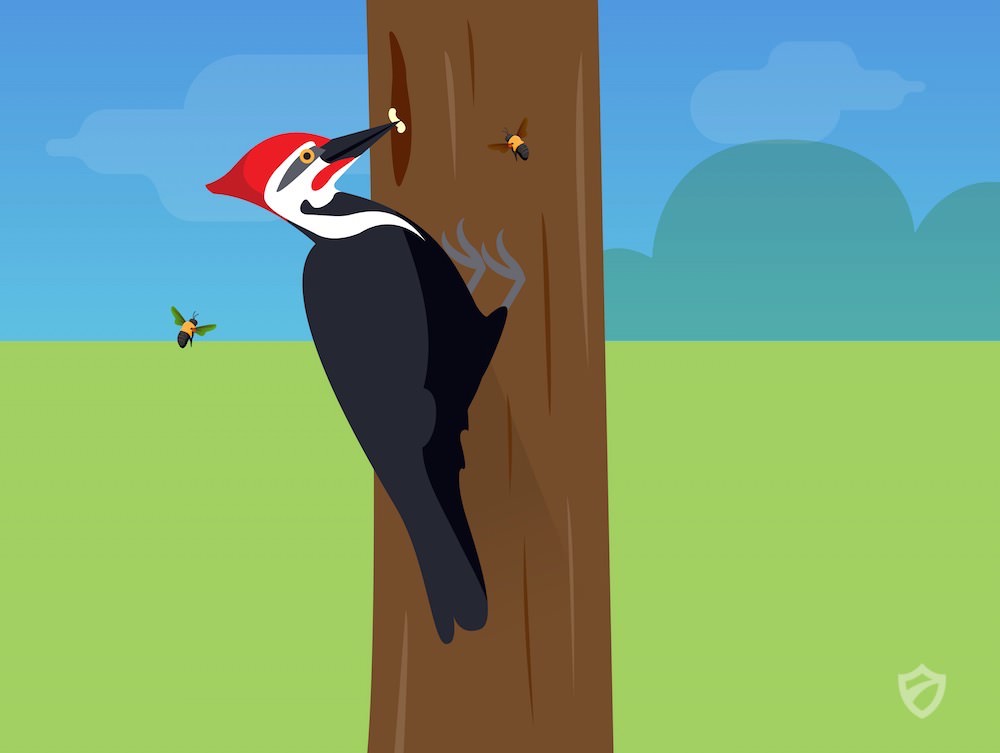
In geographic areas with year-round warm temperatures, it is possible to have two or three generations of carpenter bees each year while in areas with cold winters, there is only one generation of this insect each year.
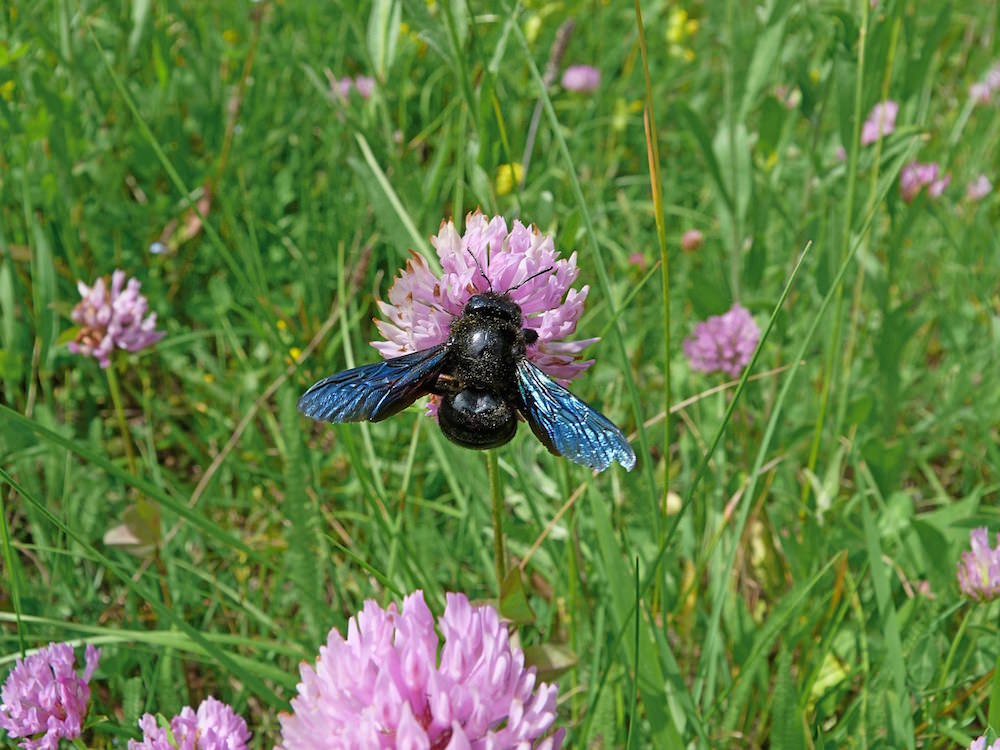
Protective Gear is Needed While Eradicating Carpenter Bees
Carpenter bees are not typically aggressive, but if you are going to get near active nests, then it is vital to wear protective gear to prevent stings from this insect. You need a specialized heavy overall garment, headgear that covers the neck and shoulders along with thick gloves. Anyone who is allergic to the venom from a beesting should hire a professional exterminator for this chore to avoid a serious reaction that requires emergency treatment. The best way to eradicate this species of bee is at its nesting site by using a residual insecticide product recommended by experts. The insecticides used for carpenter bees are not liquids or sprays but are dusting products that are applied with puffers or duster equipment that have flexible nozzles.
Where to Find Carpenter Bees Entrance Holes
You need to determine where all of the carpenter bee’s nests are first by finding each entrance hole. This is often a time-consuming process because solitary carpenter bees have separate but very tiny entrance holes located close together.
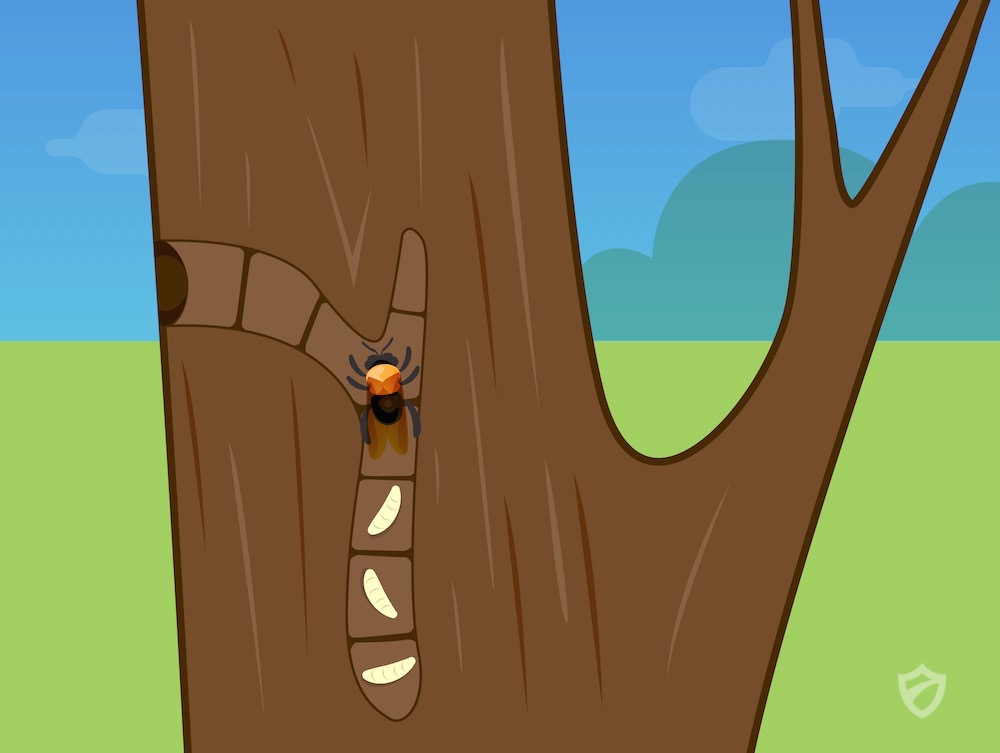
In many cases, the holes are located in difficult to see and reach locations such as:
- Window frames
- Fascia boards
- Fence posts
- Decks and porches
- Overhangs
- Soffits
- Siding
Use Caution While Working Near Carpenter Bee Nests
While most carpenter bees prefer untreated wood, the insects will bore into varnished or painted structures, especially when there is a small untreated area. Many of the carpenter bee’s nest’s entrances are located in high locations that will require a ladder to reach. Make sure to select a sturdy ladder and place it on dry ground so that it will not sink in or fall over. Instead of working alone on this home maintenance chore, have at least one other person to stand by if an emergency occurs. Look for tiny holes in wooden structures that are covered with bee excrement, frass and yellowish pollen debris.
Apply Dusting Pesticides Several Times a Year
One dusting application for carpenter bees is not enough to eradicate the insects. You will need to repeat the dusting applications at least every three to four weeks as rain will wash away the insecticides. For severe infestations, you may need to dust more often to get rid of hatching carpenter bees. The best time to begin the dusting process is in the spring when carpenter bees begin to mate, and the females lay larvae. You must continue applying insecticide dusting treatments throughout the spring, summer and autumn. The last application in late autumn should help to eliminate the bees through winter. However, in areas where temperatures remain hot, you can continue to dust insecticides throughout the year.
Inject Insecticides Deep into the Carpenter Bee Nests
It is important to select dusting equipment that reaches into the angled holes of a carpenter bee’s entrance. Make sure to insert the tip of the applicator into the hole to get the insecticide deep into the interior to effectively destroy the adult carpenter bee and larvae. You must continue the application of the insecticide throughout the spring and summer. In late autumn, you can seal the carpenter bee’s holes with caulking compound, putty or plugging materials. In most cases, all of the carpenter bees and larvae are dead or dormant by this time of year, but you should still wear protective gear.
How to Prevent New Carpenter Bee Infestations
The reason for sealing the entrance and exit holes to the carpenter bee’s nests is to prevent additional infestations in the same location next spring. However, if you plug the holes too early in the autumn, the carpenter bees are still alive and will drill out through another area of the structure or tree. After winter is over, you must prepare to prevent carpenter bee infestations again. One of the most important things you can do is make wood difficult to drill into by varnishing and painting surfaces, including difficult to reach areas that are located underneath and between boards.
Fill Crevices and Cracks in Wood Materials to Prevent New Nests
In addition, seal tiny cracks and crevices where carpenter bees can enter to drill holes to lay larvae. Make sure to refill the holes created by carpenter bees last spring to prevent new infestations. You can also reapply dusting insecticides to wooden areas where carpenter bees built nests last year. To determine if carpenter bees are returning to trees or structures on your property, look for flying insects hovering near wood that has yellow stains from pollen. Inspect trees and wooden structures for tiny holes that indicate a carpenter bee has drilled inside to lay larvae. These holes typically have sawdust or frass material nearby that the carpenter bee has deposited while boring entrance holes.
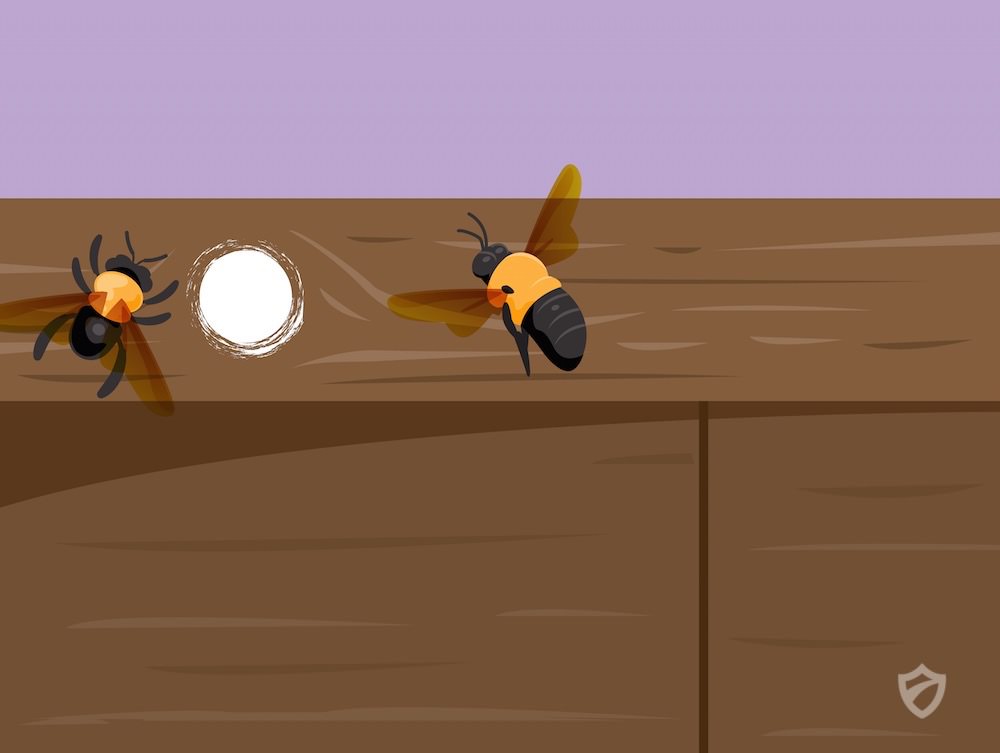

Where Carpenter Bees Build Drill Holes for Nests
There are numerous wooden items on your property where carpenter bees can drill holes for nests, including:
- Barns
- Garden sheds
- Garages
- Storage buildings
- Gazebos
- Trees and tree stumps
- Porch swings
- Playground equipment
- Fences
- Decks
- Houses
- Stacks of lumber
- Firewood
A new application of varnish or paint that covers all surfaces is the best defense against carpenter bees boring new holes. For wood that you can not treat such as firewood or stacks of lumber, cover the materials on all sides with sturdy tarps.
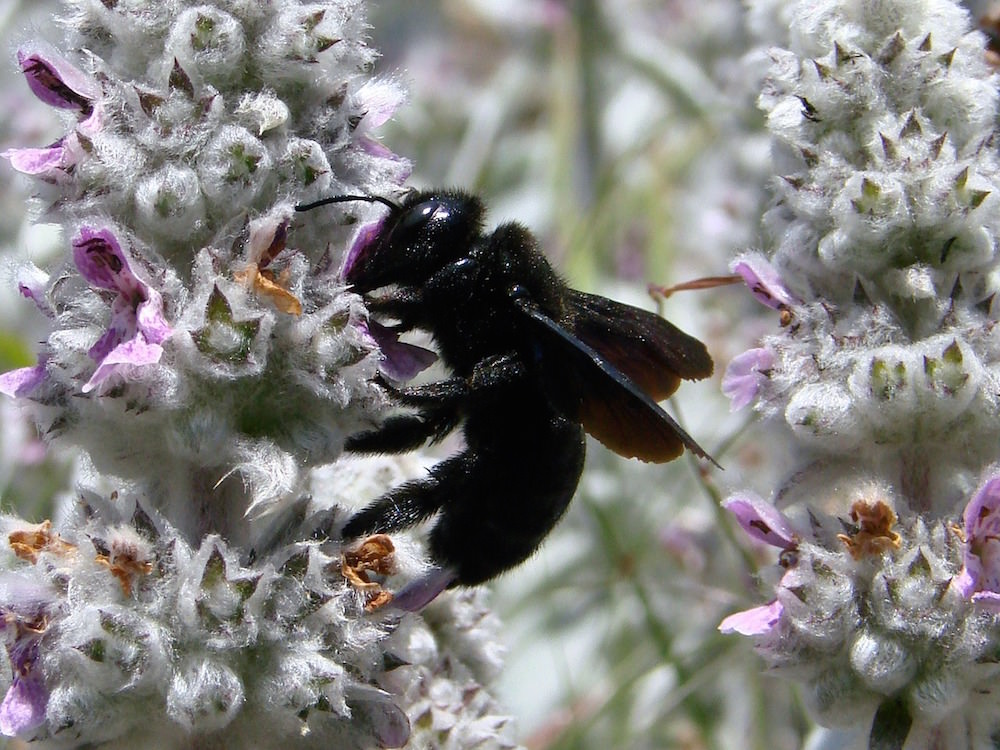
Follow These Guidelines to Eradicate Carpenter Bees
When buying insecticides for carpenter bee eradication, make sure it is designed for dusting, and use the proper equipment for the best results. Use extreme caution while applying pesticide treatments by wearing protective gear to avoid stings. Wear a breathing mask to prevent contamination from the carpenter bee insecticide. Between applications of pesticides, store the chemicals according to package directions in locked areas away from children, pets and hot temperatures.
Maintain a regular schedule while attempting to eradicate carpenter bees for the best results. This is typically a new application of waterproof dusting insecticides every three to four weeks or more often if it rains frequently.
In the late autumn, seal each carpenter bee borehole completely with a sealant material designed for the type of wood or structure. Climb on tall ladders carefully, making sure to avoid placing equipment near power or telephone lines to avoid danger.
Make sure to work with at least one other person nearby, and have a cellphone ready in case an injury occurs while climbing a ladder or spraying the pesticide chemicals.
Understand the difference between carpenter bees and other varieties of stinging insects to avoid serious injuries. If you are unsure of the type of bee that is drilling holes and building nests, then contact a professional pest control company for assistance.

